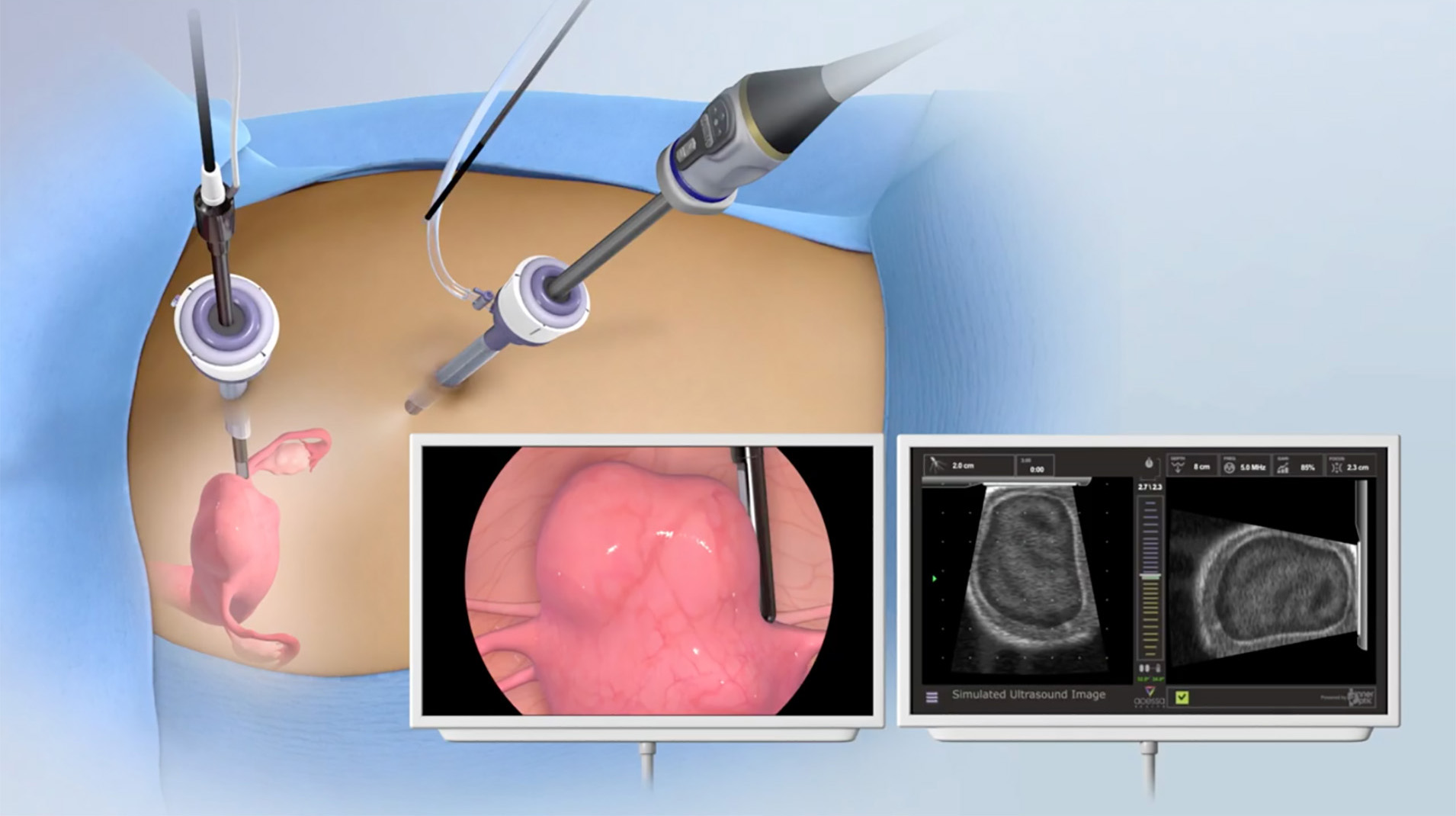Acessa Procedure

Procedure Overview
We get it, medical terminology is often confusing and overwhelming, especially when you just want to know what is going on and what you need to do to get relief. We are here to help you with that.
WHAT’S THE GOAL OF THE PROCEDURE?
A uterus can have fibroids and still be healthy. The truth is 70% of women have fibroids. When fibroids cause disruptive symptoms, women have options.
That’s where we come in. The Acessa procedure was designed to maintain the integrity of the uterus by focusing treatment solely on the fibroid (vs. cutting into the uterus or removing it completely) and more importantly to relieve symptoms caused by fibroids.
This is done by applying controlled heat directly into the fibroid, which in turn destroys the fibroid tissue and causes it to shrink over time (imagine the consistency of a baseball changing to a marshmallow). The smaller and softer destroyed fibroid tissue leads to symptom relief, without having to cut open your uterus.
Procedure Steps & Components
HOW IT WORKS
The industry terminology for the procedure is Laparoscopic Radiofrequency Ablation (“Lap RFA”). That’s an absolute mouthful. What we are doing essentially is delivering heat directly into a fibroid in order to destroy its tissue and in turn relieve your symptoms.
Prep
You are prepped and brought into the operating room for anesthesia.
Access
Your physician makes two small incisions-one in your belly button, one below your bikini line-and inserts a tiny camera and ultrasound into each incision.
Visualize
Your physician precisely locates each fibroid with the Acessa ultrasound probe and guidance mapping, allowing a full view of your uterus.

Deploy
Next, your physician deploys the tip of the Acessa handpiece into the fibroid while preserving healthy uterine tissue.
Treat
The physician deploys controlled heat through the Acessa handpiece to destroy the fibroid tissue. The physician repeats this process until every targeted fibroid is fully treated. Once the procedure is complete, your physician stitches the small incisions on the skin. Ta da!
Recover
You will wake up in the recovery room. Most patients get cleared to go home within two hours. Women typically feel ready to return to work and daily activities after 4-5 days. In terms of when you will see symptom relief—this is a hot topic. It depends on how big the fibroid is and what symptoms you’re experiencing.

WHAT MAKES ACESSA, ACESSA
Our technology allows for a more thorough and less invasive method of treating your fibroids. Let’s dig into what makes Acessa different. The latest version of the technology (Acessa ProVu) is a fully integrated system with:

Ultrasound Probe :
This allows physicians to locate any and all fibroids you may have. Imagine X-ray vision for your uterus.

Acessa Handpiece :
This deploys controlled radiofrequency energy (heat) that destroys fibroid tissue. Imagine a light saber for fibroids.

Guidance Mapping:
This provides visual cues for physicians to ensure safe and thorough treatment. Imagine GPS for your uterus.
How Long Does it take to relieve symptoms?
We've learned from our studies that it typically takes 3-12 months for symptoms to improve. Yes, we feel you, that’s a big range of time. The thing is, each fibroid is different and each symptom is different, so the timeline truly varies from woman to woman. From our studies, we know the majority of women felt the most improvement within the first three months after the procedure.
Risk Factors
There are risks for every procedure. Acessa has been studied on 400+ patients and deemed a “safe and effective” treatment for uterine fibroids. We’ve provided a more in depth look at risk factors that you can download below.



